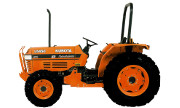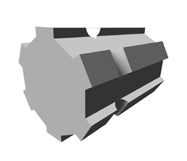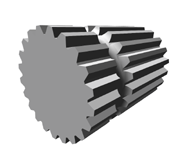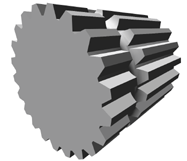Brambleberry
Bronze Member
- Joined
- May 25, 2009
- Messages
- 60
- Tractor
- Kubota 4850 EverClutch
I'm about to go pick up a 97 Kubota L4850 EC (hydraulic shuttle shift).
One last thing I'm wanting to figure out before making the long trip and purchase is to know more details of the PTO setup that I'm purchasing.
I'm a little confused about terminology, and just want some clarification...
Here's what I think is going on and I want to know whether it's correct or not:
Live PTO is a 2 stage clutch that lets you shift gears without disengaging the PTO by pressing down halfway. Pressing to the floor will open the clutch for both transmission and pto.
Independent (hydraulic?) PTO: PTO engagement is controlled by a switch or a mechanical lever (hyd valve??) That has nothing to do with the transmission clutch. Typically (always??) has a hydraulic brake that stops the PTO immediately upon disengagement. I've heard some issues with this brake getting ruined by too much impact and wear, and that it's best to keep an overrunning coupler on the shaft to let the implement freewheel down to a stop instead of slamming to a stop.
"Non-Live" (no idea what is supposed to be called) PTO is what my Pasquali 988 has and it's incredibly frustrating, I love this tractor but absolutely cannot keep living with a "dead"

 PTO. This PTO cannot be continuous when shifting gears and the implement winds down, losing momentum every time you clutch to shift or stop. Terribly slow work mowing brush, slopes etc. PTO can be run without tractor moving by engaging PTO with transmission in neutral.
PTO. This PTO cannot be continuous when shifting gears and the implement winds down, losing momentum every time you clutch to shift or stop. Terribly slow work mowing brush, slopes etc. PTO can be run without tractor moving by engaging PTO with transmission in neutral.
So I'm wondering what type this L4850 hydraulic shuttle shift has, partly out of curiosity and partly so I can check that the PTO brake (if it has one) is not broken (requires splitting the tractor to fix, as I understand it).
Thanks for any help and insight into this, I'm hoping it can also help clarify the terminology for other folks shopping for the ideal tractor.
One last thing I'm wanting to figure out before making the long trip and purchase is to know more details of the PTO setup that I'm purchasing.
I'm a little confused about terminology, and just want some clarification...
Here's what I think is going on and I want to know whether it's correct or not:
Live PTO is a 2 stage clutch that lets you shift gears without disengaging the PTO by pressing down halfway. Pressing to the floor will open the clutch for both transmission and pto.
Independent (hydraulic?) PTO: PTO engagement is controlled by a switch or a mechanical lever (hyd valve??) That has nothing to do with the transmission clutch. Typically (always??) has a hydraulic brake that stops the PTO immediately upon disengagement. I've heard some issues with this brake getting ruined by too much impact and wear, and that it's best to keep an overrunning coupler on the shaft to let the implement freewheel down to a stop instead of slamming to a stop.
"Non-Live" (no idea what is supposed to be called) PTO is what my Pasquali 988 has and it's incredibly frustrating, I love this tractor but absolutely cannot keep living with a "dead"
So I'm wondering what type this L4850 hydraulic shuttle shift has, partly out of curiosity and partly so I can check that the PTO brake (if it has one) is not broken (requires splitting the tractor to fix, as I understand it).
Thanks for any help and insight into this, I'm hoping it can also help clarify the terminology for other folks shopping for the ideal tractor.




